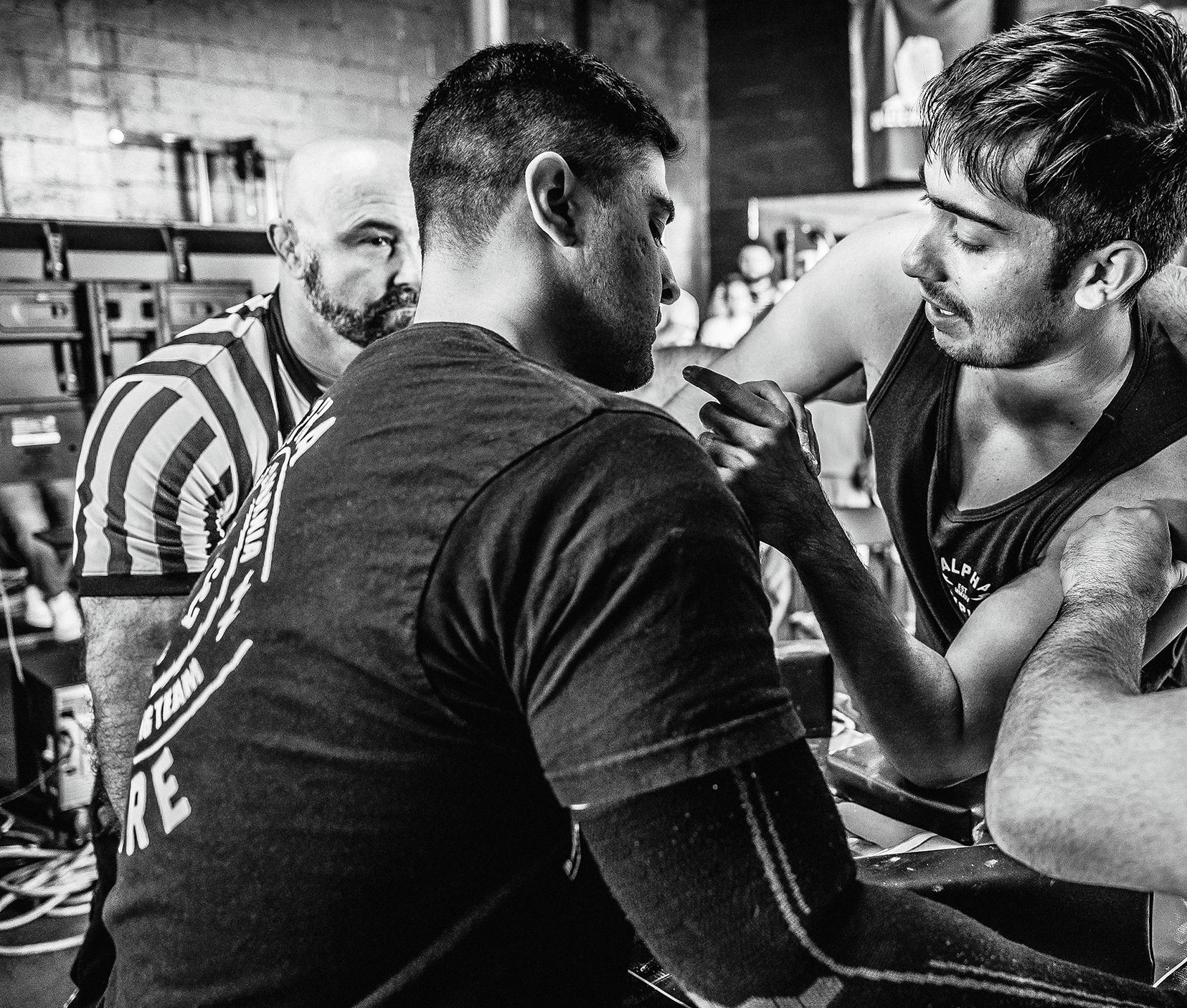How do I get stronger for armwrestling?
This question can and should be asked at any stage of an armwrestler’s journey and, to a large extent, the quality of the answer informs the quality of one’s training and efforts.
Armwrestlers are notorious for giving a wide range of answers to this question and while there is, seemingly, a diversity of opinion and ideas, we can extract some common threads that run through the various responses and start to flesh out a complete picture of how to approach our training on and off the table.
Strength Categories of Armwrestling
So what are these common threads?
Well, since armwrestling is largely a strength sport (with combat elements), any discussion of how to get stronger on the table should start with an understanding of what our body is actually doing to produce strength.
 Photo by Brad Cook
Photo by Brad Cook
When it comes to the sport of armwrestling, all of the various hand, wrist, and arm/body strengths can be broadly classified within the following two categories:
- Dynamic Strength
- Static Strength
The goal of this article will be to present you with a basic understanding of these two categories, and how they apply to our actions on the armwrestling table.
This piece will be a longer read, but stick with it and you’ll have gained a better understanding of armwrestling mechanics.
Alright, let’s dive in.
Dynamic Movements & Isotonic Contractions
When we’re lifting weights in order to build muscle and get stronger, most of the exercises we do fall under the banner of “dynamic movements”.
Simply put, dynamic movements are those that induce a joint to go through a particular range of motion, whether it’s a single joint that’s moving (isolated movements) or multiple (compound movements).
A familiar example of an isolated dynamic movement is the bicep curl where the arm moves up and down through the rotation of the elbow joint.
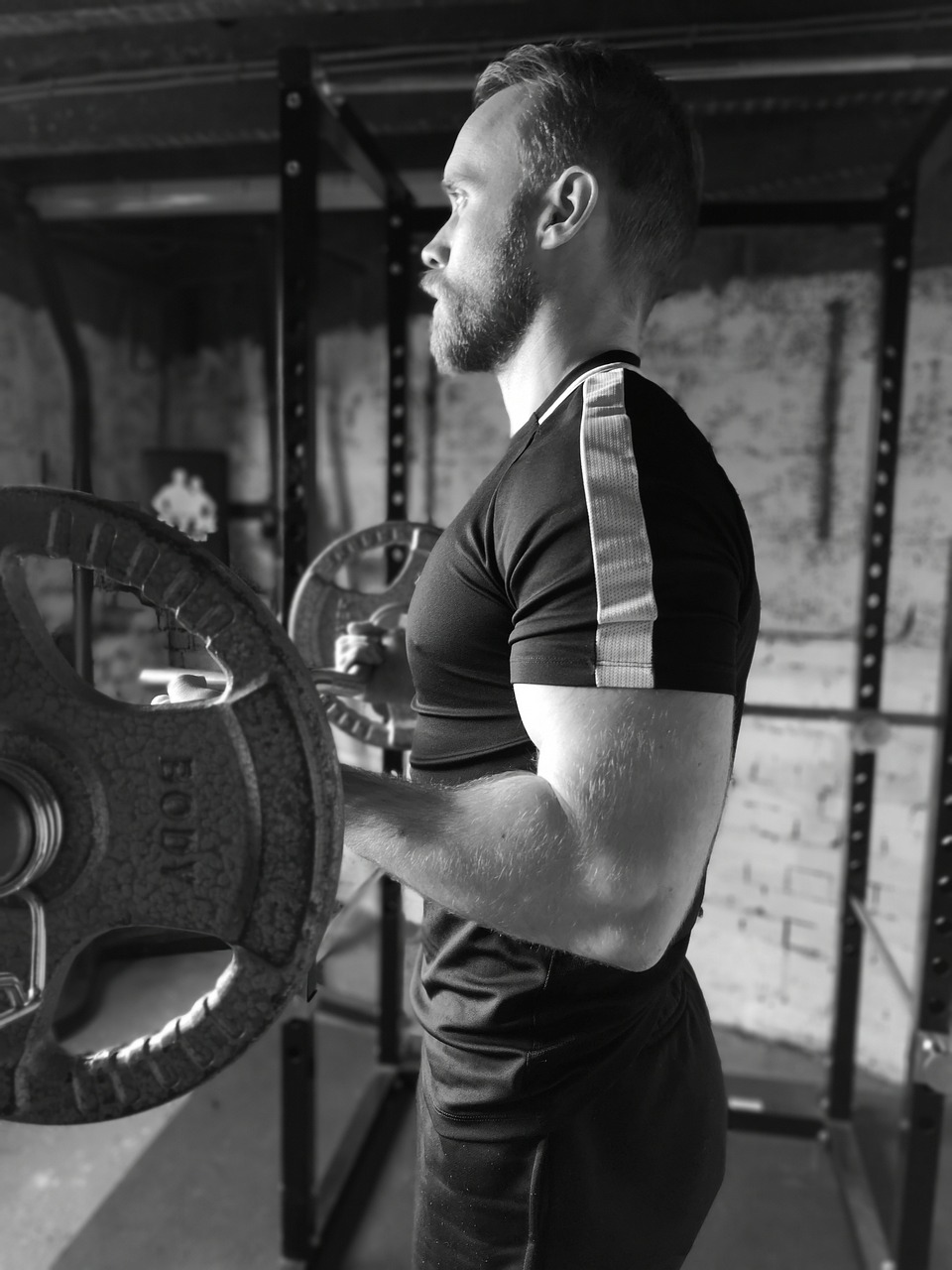
When we are performing these dynamic movements against some form of resistance, our muscles are tensing up and alternating between periods of “shortening” or “lengthening” – aka contraction.
We can classify these muscle contractions using terms you’ve probably heard before:
-
Concentric contractions = shortening of muscle
-
Eccentric contractions = lengthening of muscle
Both of these fall under the heading of “Isotonic Contractions.”
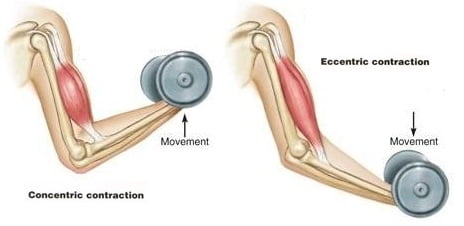
Keeping these definitions in mind, we’ll refer to “dynamic strength” as simply the amount of force we are able to produce within a partial or full range of motion of a particular dynamic movement.
Put another way, the above definition of dynamic strength is just a formal way of saying “I can bicep curl 50 lbs”.
Static Movements & Isometric Contractions
Now that we’ve covered dynamic strength, we should be able to intuit what static movements are.
If you’ve ever done planks, wall sits, or held your body at the top of a pull-up then you already know what a static “movement” is.
In short, static movements are when we maintain a specific position with as little movement as possible. Although our body is still generating force and our muscles are still contracting, the actual range of motion through a joint is minimized if not completely inhibited in a static “movement”.
The muscle contraction that occurs during this static condition is called an isometric contraction.
So if we wanted to target our biceps in a static manner, we could take a barbell and hold it in place at some point within the range of motion of a bicep curl as depicted below.
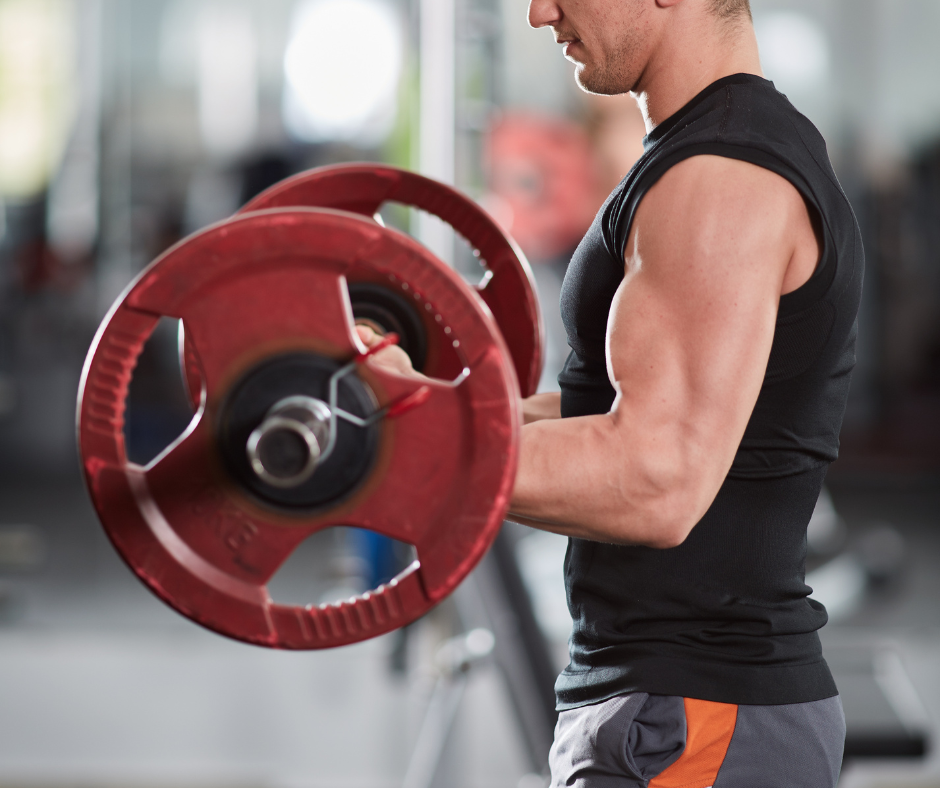 In a static “movement”, our muscles are isometrically contracting and there is minimal to no shortening or lengthening of the muscle
In a static “movement”, our muscles are isometrically contracting and there is minimal to no shortening or lengthening of the muscle
Following through with our logic, “static strength” can be defined as the amount of force exerted by the body to maintain a specific static position.
Applying it on the Table
Coming back to armwrestling, how can we apply these concepts of static and dynamic strength to our actions on the table?
Starting with dynamic movements, we mainly see them occur in the following two situations:
- Immediately after the start of the match
- When one or both competitors are trying to make tactical adjustments or transitions.
 Starting position of a match. Photo by Jackson Ruckar
Starting position of a match. Photo by Jackson Ruckar
Right after the ref says “Go” we initiate through some degree of dynamic motion in the finger, wrist, elbow, and/or shoulder joints in order to execute our move or, if we’re feeling ambitious, we head straight towards the pinpad.
In the case of tactical adjustments, we see one or both competitors making small dynamic movements through their wrist, fingers, elbow, or shoulder in order to solidify a key position or to exploit their opponent’s weak links or just some other adjustment that will result in an advantage – a common example of this kind of adjustment is the “regrip”.
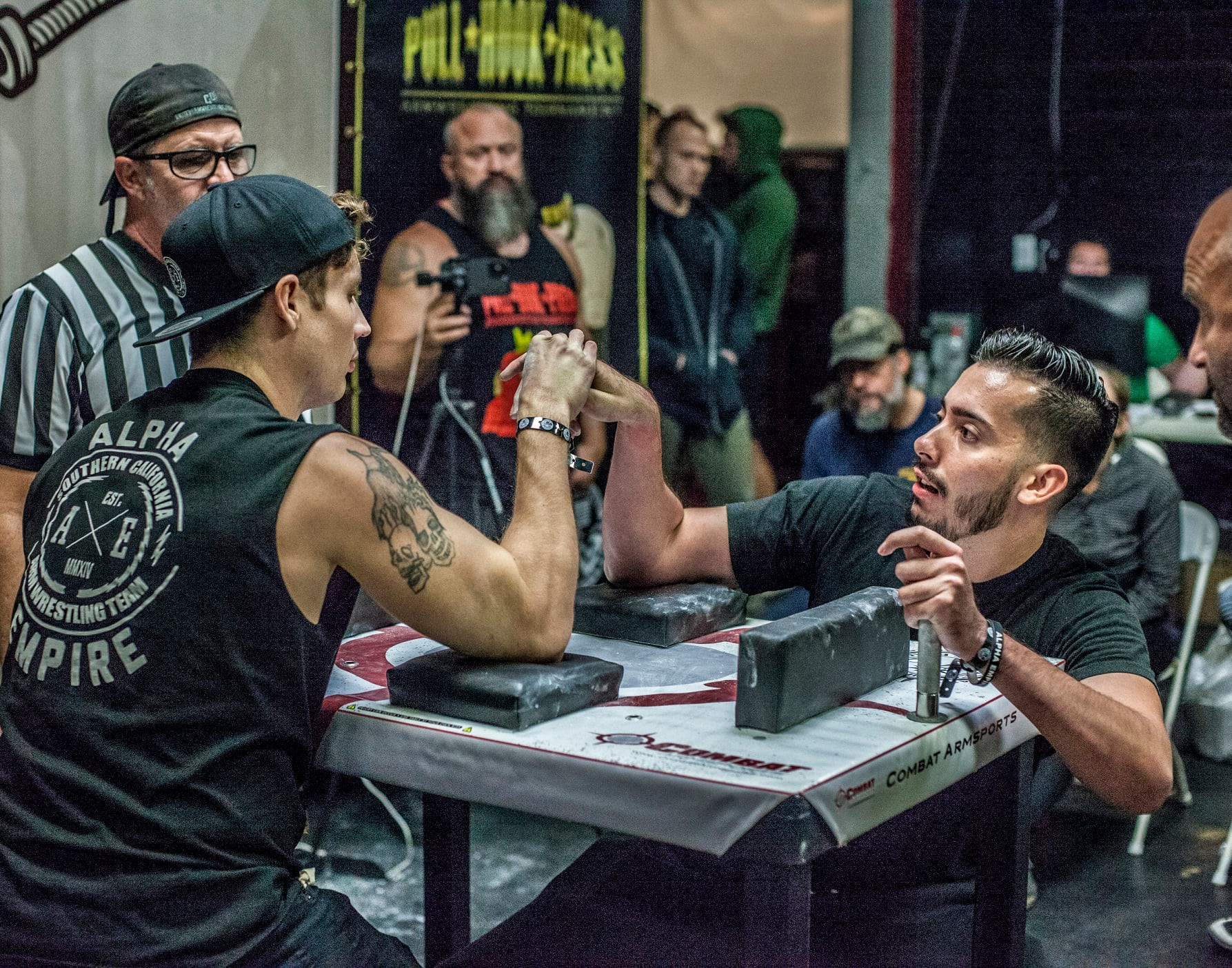 Tactical adjustments being made. Photo by Ed Bedrosian.
Tactical adjustments being made. Photo by Ed Bedrosian.
Now, although there’s a fair bit of dynamic movement after the “Go” and during these transition episodes, they still do not paint the entire picture of the real kinds of strength that are required on the armwrestling table.
Of course, I’m now referring to static strength.
If we closely observe an armwrestling match, we’ll see that both participants seem to be securing a key position (initially through dynamic movements), and then solidifying that position by tightening their upper body while moving their hips and lower body to drive their opponent’s hand backwards and to the side.
It is static strength which enables armwrestlers to do all of this while also maximizing their positional integrity by keeping the various elements of their upper body tight and connected like a “welded chain”.
Further Explanation of Static Strength
Hopefully, the section above helped clarify which situations require static and dynamic strength. I also implied that static strength was the “real strength” required for armwrestling, and I’ll try to further argue my claim through the following questions:
Are we ever dynamically bicep curling or lat rowing our opponent during a match?
Are we doing wrist curls with their hand through a full range of motion?
Well maybe if we’re several levels stronger than them, but in most cases where athletes are of a similar strength level, it’s nearly impossible to execute large-range dynamic movements while both athletes are fully exerting themselves.
What we instead observe is that both athletes perform their movements by rapidly securing a position in their wrist, elbow, and shoulders at the start of a match and then “defaulting” to a static situation by locking the angles of those joints, isometrically contracting the corresponding muscles trying to maximally exert the most amount of static pressure, and then bending at the hips, knees, and ankles to enable themselves to slide across the elbow pad and pin their opponent.
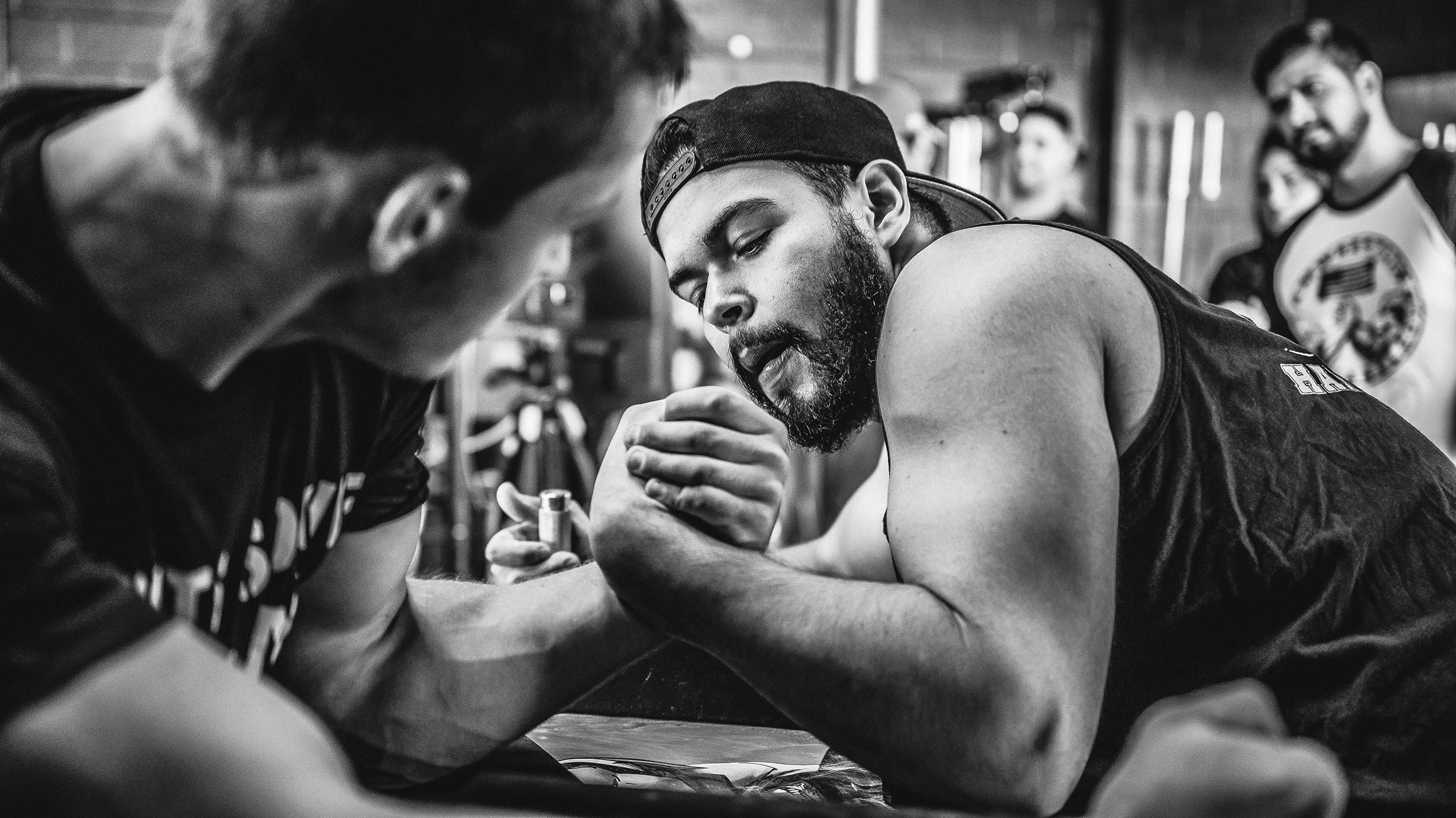 So much of armwrestling is about initially securing a favorable position and then locking the various “angles” of the upper body as we move across the pad to pin our opponent. Photo by Jackson Ruckar
So much of armwrestling is about initially securing a favorable position and then locking the various “angles” of the upper body as we move across the pad to pin our opponent. Photo by Jackson Ruckar
Even in those cases when we manage to flash-pin an opponent and it looks like there’s a lot of active movement, when we slo-mo the scene we observe that the conditions highlighted above are still at play: we are initiating with small dynamic movements to secure a position and are then invoking static pressure to keep our body tight and connected as we try to pin our opponent’s hand.
Armwrestling as a Vehicle for Focused Creativity
There is still much more that needs to be written about this fascinating topic, but hopefully we’ve laid down the basics of dynamic and static strength as they pertain to armwrestling.
I started this piece by highlighting the question of “how do I get stronger for armwrestling?” and that a good answer will have to encompass an understanding of which specific strengths are most relevant to our sport.
Now that we understand that both dynamic and static strength are required, to varying degrees, for optimal movement in an armwrestling match we can structure our training to reflect this understanding.
** I’ll be thoroughly covering the specific exercises, training implements, and body positions that we can select in a gym setting or during table-sparring sessions in separate articles. **
Although we have broken down the various strengths of armwrestling into two major categories, this by no means requires us to be restrictive or mundane in our training approach.
The true beauty of armwrestling is illustrated by the nearly-infinite variety of positions and situations that arise from the complex interplay of static and dynamic actions generated by our bodies, and this should inspire rather than discourage us to be creative in our training.
An understanding of these two strength categories will empower you to not only focus your training efforts to reflect the realities of the sport, but to creatively construct a program that makes the best use of your individual strengths, physical gifts, and pulling style on the table.
References
-
Criner, E. (2021, July 5). Concentric, isometric & eccentric training – Differences, benefits & examples. Athleticlab.com. https://www.athleticlab.com/concentric-isometric-eccentric-training-differences-benefits-examples-by-elizabeth-criner/#
-
Lum, D. (n.d.). Criner, E. (2021, July 5). Concentric, isometric & eccentric training – Differences, benefits & examples. Sportsmith.co https://www.sportsmith.co/fundamental/what-is-isometric-training/
-
(n.d.). Dynamic vs. Static Exercises to Build Strength. Texasspineandsportstheraphy.com. https://texasspineandsportstherapy.com/dynamic-vs-static-exercises-build-strength/
